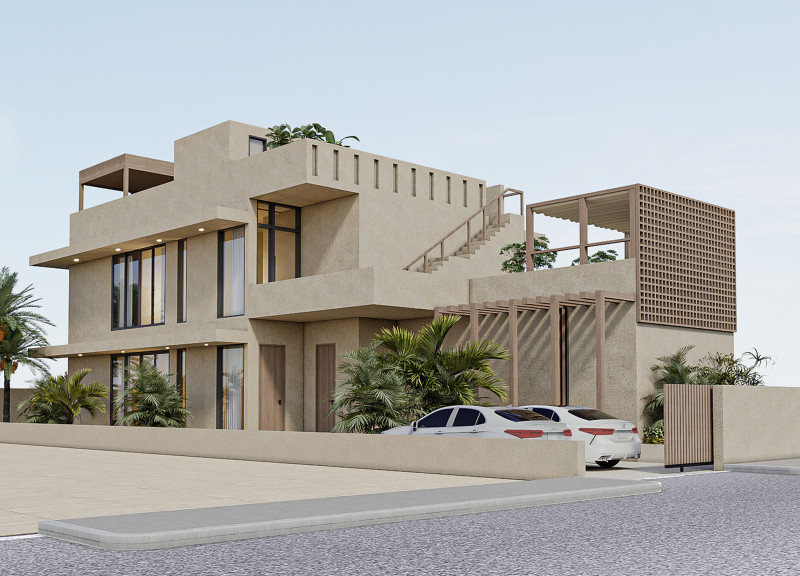5 key facts about this project
At its core, the architecture serves a multifunctional purpose, designed to accommodate diverse activities while ensuring an adaptable space that responds to varied user needs. The design seamlessly integrates communal and private areas, fostering a sense of connection among users while also providing spaces for reflection and solitude. The layout encourages movement throughout the building, allowing for an organic flow that invites exploration and interaction.
One of the key elements of this architectural project is its materiality. A combination of locally sourced materials, such as recycled timber, concrete, and glass, not only reflects the project's commitment to sustainability but also reinforces a sense of place. The use of natural materials is particularly noteworthy, as they establish a dialogue with the surrounding landscape, allowing the structure to blend harmoniously with its environment. The choice of materials is aesthetically pleasing while also practical, ensuring durability and longevity.
The design incorporates large window openings and skylights that emphasize natural light, creating bright and inviting spaces. This strategy not only contributes to the overall energy efficiency of the building but also enhances the well-being of its occupants, promoting a healthier indoor environment. The thoughtful placement of these openings encourages ventilation, reducing the reliance on artificial heating and cooling systems.
Unique design approaches are evident throughout the project, particularly in the detailing and craftsmanship. Elements such as green roofs, living walls, and structural shading devices are strategically integrated to enhance the building’s environmental performance. The green roofs not only provide insulation but also promote biodiversity, acting as a habitat for local flora and fauna. The living walls introduce a vertical garden aspect, softening the structure’s exterior and contributing to the overall aesthetic cohesiveness.
Attention to detail is also reflected in the interior spaces, where a balanced interplay of textures and colours enhances the user experience. The architectural design embraces simplicity and functionality, with open-plan areas that can be adapted for various uses. Custom furniture solutions and built-in storage further emphasize the intention of maximizing space efficiency without compromising comfort.
In essence, this architectural project exemplifies a holistic design philosophy that prioritizes sustainability and user experience. By carefully considering its context and embracing innovative material use, the project stands out as an exemplar of modern architecture that responds to the needs of its community while respecting the environment. Readers interested in delving deeper into this project are encouraged to explore the architectural plans, sections, and designs that reveal the intricacies of this thoughtful architectural endeavor. Engaging with these elements will provide further insights into the ideas that underpin this compelling piece of architecture.


























